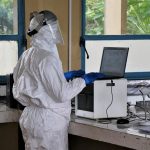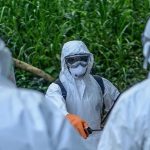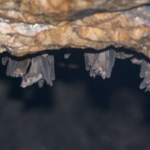The World Health Organization (WHO) and its partners have ramped up their support for the Ugandan government’s response to the ongoing Sudan virus disease (SVD) outbreak, which is part of the Ebola virus family. This support includes facilitating access to candidate vaccines and treatments.
The first 2,160 doses of the vaccine candidate and related treatments have already arrived in Kampala, Uganda, having been prepositioned as part of outbreak preparedness efforts.
The vaccine trial process is underway, which includes the orientation of research teams on trial procedures and logistics. Research teams have been deployed to the field to work alongside surveillance teams while awaiting necessary approvals.
Both the vaccine candidate and the treatments (which include a monoclonal antibody and an antiviral) are being provided under clinical trial protocols, aimed at documenting their efficacy and safety.
As of January 30, there has been one confirmed case and 45 contacts are being monitored.
Uganda has experienced five previous SVD outbreaks, with the most recent one declared in September 2022 and ending in January 2023. That outbreak resulted in 164 cases and 77 deaths. During that period, a WHO committee of external experts evaluated candidate vaccines and recommended their use in clinical trials against the SVD virus.
WHO is collaborating with Uganda’s Ministry of Health, designated Ugandan Principal Investigators, and teams from Makerere University Lung Institute and the Ugandan Virus Research Institute, as well as global filovirus experts, to initiate the trials. The trials have been designed as part of a global collaborative effort coordinated by WHO, involving developers, academic institutions, regulatory authorities, and researchers from countries at risk of filovirus outbreaks.
The aim of the vaccine trial is to assess the efficacy of a candidate vaccine, which could help end the current outbreak and protect populations at risk in the future. Those most at risk, such as close contacts of confirmed cases, are eligible to participate. The study will employ a “ring vaccination” strategy, with mobile teams rapidly reaching affected areas.
WHO is working with Makerere University Lung Institute and the Ugandan Virus Research Institute to lead the trial’s implementation.
The development of the research protocols has been driven by the MARVAC Consortium and the Collaborative Open Research Consortium (CORC) for the Filoviridae Family, with contributions from developers such as IAVI (which provided the Sudan virus vaccine) and Gilead (which provided the antiviral remdesivir). Other organizations supporting the trial include the Coalition for Epidemic Preparedness Innovations (CEPI), the Africa Centres for Disease Control and Prevention, Canada’s International Development Research Centre, the European Commission’s Health Emergency Preparedness and Response Authority (HERA), and WHO. This rapid action represents a concerted international effort to address dangerous pathogens through research, innovation, and countermeasures.
While Sudan virus disease outbreaks can be controlled without vaccines, control is achieved more quickly with safe and effective vaccines. In the meantime, Uganda has launched a comprehensive outbreak response to halt transmission, trace contacts, conduct epidemiological investigations, and increase community awareness.
WHO has allocated US$ 1 million (Shs 3.7 billion) from its Contingency Fund for Emergencies to accelerate outbreak control efforts.
Sudan virus disease is a severe, often fatal illness caused by the Sudan virus (Orthoebolavirus sudanense), which is in the same virus genus as Ebola. The case fatality rate in past outbreaks has ranged from 41% to 100%. Although there are no approved vaccines or treatments for Sudan virus, early supportive treatment has been shown to significantly reduce deaths.







